All the best books on peace and peacebuilding to help you in your peacebuilding efforts. Selected books provide practical tips, guidance, and insight on many aspects of peacebuilding to help you take your peacebuilding efforts to the next level.
by Taylor O’Connor | 21 July 2023

Photo by Joel Muniz on Unsplash
“The more we sweat in peace, the less we bleed in war.” -Vijaya Lakshmi Pandit
Those of us who involved in formal peacebuilding efforts know that a lot of the books out there on building peace are quite formal and academic. Boring! Many also sing the praises of formal mechanisms and structures for building peace. I’m not interested in any of that.
If you’ve read any of my writing, or are part of our community here at Everyday Peacebuilding (see email sign up HERE) you know I can’t write 500 words without being critical of global peacebuilding systems and structures.
So I’m here to offer you a tailored list of alternative readings on building peace. This list excludes heavily academic books and those that praise flawed global systems behind peacebuilding or promote a patronizing White Saviorism approach. Instead, my recommendations embrace a social justice perspective, ranging from practical tools and techniques to theoretical analyses of peace and conflict, as well as critiques of global peacebuilding systems. These readings are valuable resources for all types of peacebuilders.
This is a list for anyone with at least a little experience building peace. If you are new to building peace check out my other article: Top ten books for aspiring peacebuilders.
I’ve organized my twenty-one recommendations into the following four categories:
· Handbooks and toolkits on building peace
· Decolonizing peacebuilding and improving peacebuilding practice
· Theoretical books analyzing the roots of peace and conflict
· Tools, techniques and reference materials
Have a look. I hope you find something interesting in this list that will help you in your efforts to build peace. Each book is accompanied by a brief description and an Amazon link for purchase. Note that the provided links are affiliate links, which you can find a description of at the end of the article.
Handbooks and toolkits on building peace
1. Building Peace: Sustainable Reconciliation in Divided Societies (1998) | by John Paul Lederach

This book by distinguished peace scholar and practitioner, John Paul Lederach, explores the complexities of peacebuilding and reconciliation processes in societies deeply divided by conflicts. Lederach offers practical insights and shares examples from his direct experience as a mediator, always emphasizing the importance of inclusive and participatory approaches. He provides tips on how to address historical grievances, build trust, and create a conducive environment for building peace in divided societies. This book is great for those working to build peace in situations deeply divided by conflict.
2. Integrated Peacebuilding: Innovative Approaches to Transforming Conflict (year) | by Craig Zelizer
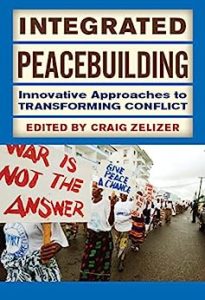
I found this book to be highly comprehensive and well-researched. The author is the founder and director of Peace and Collaborative Development Network (PCDN) and draws upon his network to provide illustrative examples of how peacebuilders can work towards the concept of ‘integrated peacebuilding.’ This approach recognizes the interconnected nature of peace and conflict dynamics, advocating for a synergistic coordination of various peacebuilding efforts involving local, national, and international actors. Through in-depth case studies, the author offers valuable insights into the challenges and opportunities of integrated peacebuilding in diverse conflict contexts worldwide.
3. Making Peace Last: A Toolbox for Sustainable Peacebuilding (2012) | by Robert Ricigliano

This book provides a critical review of key publications on peacebuilding over a span of more than 30 years. It offers practical insights related to the key lessons and recommendations presented in these publications. The book presents a variety of tools, strategies, and best practices aimed at tackling the challenges of establishing lasting peace in conflict-affected regions. It covers a wide range of topics, including conflict analysis, mediation, negotiation, reconciliation, and post-conflict reconstruction.
4. Do No Harm: How Aid Can Support Peace – Or War (2010) | by Mary B. Anderson
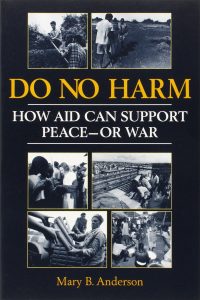
While this book made a significant impact in the humanitarian and development aid sector upon its publication, it offers a critical analysis of the impact of aid on conflicts worldwide. The author argues that well-intentioned aid efforts can unintentionally worsen existing conflicts and even create new ones if not carefully planned and executed. The book presents a framework for aid organizations to assess the potential negative consequences of their activities and provides practical guidance on ensuring aid supports peacebuilding and conflict prevention. However, despite the widespread use of the concept of ‘do no harm’ among aid workers, many lack a clear understanding of its meaning and application. As a result, aid organizations may unintentionally cause harm while claiming to adopt a ‘do no harm’ approach. The book is straightforward and highly recommended for a quick read, especially for those facing situations where a ‘do no harm’ approach is necessary.
5. Conflict Assessment and Peacebuilding Planning: Toward a Participatory Approach to Human Security (2013) | by Lisa Schirch

II am truly delighted to read books and articles by Lisa Schirch, a distinguished peace scholar and practitioner. She has a remarkable talent for organizing complex information on the ‘how to’ of peacebuilding, presenting it in a clear and applicable manner. Moreover, her work stands out for its innovative approach, as she examines peacebuilding initiatives worldwide to evaluate their effectiveness. Unlike other books that may showcase creative ideas and interesting examples, this one offers practical tools and step-by-step processes to plan comprehensive peacebuilding initiatives for addressing complex conflicts. By following Schirch’s guidance, your initiatives will not only ‘do no harm,’ as discussed in the previous book, but also create real and lasting change for peace, transforming the very roots of conflict. I stumbled upon this valuable book years ago in a bookstore while working in Islamabad, Pakistan, and it has since become my trusted guide in my peacebuilding efforts.
6. A Handbook of International Peacebuilding: Into the Eye of the Storm (2002) | edited by John Paul Lederach and Janice Moomaw Jenner

This book is a compilation of writings from diverse scholars and peacebuilding practitioners. It serves as a comprehensive handbook covering various topics such as conflict resolution, reconciliation, human rights, governance, and development. The authors explore the complexities of peacebuilding in different contexts, highlighting the importance of context-specific and participatory approaches. The sections are organized to offer a step-by-step guide for anyone engaged in peacebuilding efforts.
7. Opting Out of War: Strategies to Prevent Violent Conflict (2012) | by Mary B. Anderson and Marshall Wallace
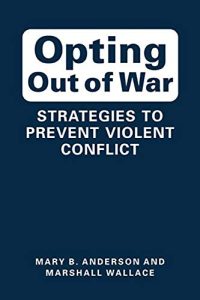
This book stands out because it focuses on providing ordinary people with approaches to prevent war and violent conflict. It directly addresses individuals who may not identify as peace activists or traditional peacebuilders, such as those working in the global aid industry, offering them ways to contribute to building peace. The book explores alternative methods, including diplomacy, negotiation, and grassroots initiatives, which can effectively reduce tensions and foster lasting peace. The authors use diverse examples to illustrate the success of these non-violent approaches and challenge conventional notions of conflict resolution. Notably, Mary B. Anderson, also the author of the groundbreaking book “Do No Harm” (mentioned earlier in this blog post), and Marshall Wallace draw on their extensive experience as leaders in the innovative peacebuilding organization CDA Collaborative Learning Projects.
Decolonizing peacebuilding and improving peacebuilding practice
8. Peacebuilding: The Twenty Years’ Crisis, 1997-2017 (2017) | by David Chandler
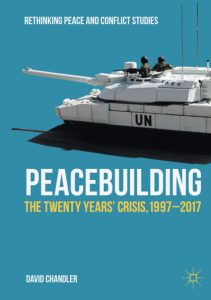
This book is a brutal critique of global peacebuilding structures, tracing their development over two decades. The author discusses the origins of peacebuilding as an offshoot of peacekeeping efforts and explores their current form, which he views as “naïve at best, and at worst, hubristic and Eurocentric,” particularly under the leadership of the UN. The book covers various topics, including conflict resolution, post-conflict reconstruction, and reconciliation, while also addressing the challenges in implementing peacebuilding initiatives. It is an excellent resource for those interested in advocating for changes in the global peacebuilding architecture or contributing to broader efforts for decolonizing peacebuilding.
9. No More War: How the West Violates International Law by Using ‘Humanitarian’ Intervention to Advance Economic and Strategic Interests (2020) | by Dan Kovalik
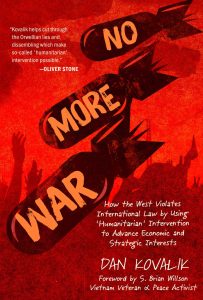
Another one for those involved in peacebuilding within the international aid industry. This one challenges the concept of humanitarian intervention by Western powers, examining how some countries use the pretext of humanitarian concerns to intervene in other nations for their economic and strategic interests. The research conducted for this book is impressive, mapping the use of military force under the guise of humanitarian purposes. Peacebuilders can use this book to reflect on the ethical implications of their involvement in humanitarian activities.
10. From Pacification to Peacebuilding: A Call to Global Transformation (2010) | by Diana Francis
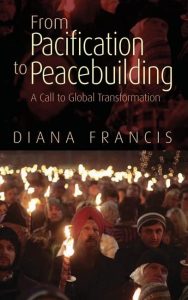
I like this book because it explicitly challenges militarism as a barrier to peace. While traditional peacebuilding efforts avoid addressing militarism, and global funding mechanisms prohibit peacebuilders from doing so, this book directly confronts militarism as a major oversight in global peacebuilding. The book traces the historical development of peacebuilding efforts, arguing that a transformative approach is necessary to address the root causes of conflicts and inequalities. Real-world examples are drawn upon to highlight the challenges of implementing effective peacebuilding strategies within current systems and structures, while offering ideas for peacebuilders to challenge the culture and institutions of war. The author’s experience as a former President of the International Fellowship of Reconciliation (IFoR), a historic peace activist organization, lends credibility to the book’s perspective.
11. Choosing Peace: Agency and Action in the Midst of War (2019) | by Bridget Moix
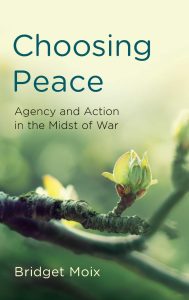
This book speaks directly to individual activists, community-based groups, and locally-led civil society organizations, those who the author considers as most directly affected by violent conflict, who are most dedicated to transforming it, and who remain notably on the margins of what has become the more recognized ‘international peacebuilding field.’ It criticizes peacebuilding structures based in the Global North, particularly the United States, and discusses the disconnect between grassroots peacebuilders in the Global North and Global South. This book challenges conventional notions about violence and security, advocating for the agency of individuals and communities in building peace. The author draws on her experiences working directly with grassroots peacebuilding groups around the world and her struggles engaging with global peacebuilding structures and political actors.
12. The White Man’s Burden: Why the West’s Efforts to Aid the Rest Have Done So Much Ill and So Little Good (2006) | by William Easterly
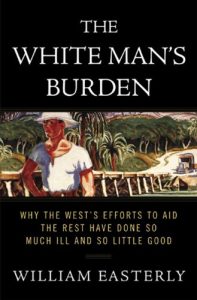
This book is a critical examination of the impact of Western aid in the global South. It is not a peacebuilding book, but recognizing that traditional peacebuilding efforts are part of the global aid industry, this is an essential book for any peacebuilder working within this industry. I consider it core reading for necessary efforts to decolonize peacebuilding. The book challenges the notion of the “white man’s burden,” a historical perspective that Western countries have a responsibility to help and develop less fortunate nations. The author argues that despite the good intentions behind aid efforts, they often perpetuate poverty and inequality. He advocates for more accountability and transparency within the global aid industry, and a more inclusive and locally-driven model. The focus is on empowering local communities to find their own solutions to development challenges, as opposed to solutions imposed upon them by top-down structures—all concepts central to a decolonized approach to peacebuilding.
13. Decolonizing Peace (2012) | by Victoria C. Fontan

This book was written years before the movement to decolonize peacebuilding gained momentum. In it, author Victoria C. Fontan challenges traditional and colonial approaches to peacebuilding, examining the impact of Western-centric perspectives on peacebuilding practice. She advocates for a more inclusive and diverse understanding of peace, urging for broad decolonization of peacebuilding systems and structures. Additionally, Fontan emphasizes the importance of recognizing the knowledge, experiences, and voices of marginalized communities and indigenous peoples in peacebuilding. This book is a significant contribution to the movement to decolonize peacebuilding and provides practical advice for peacebuilders to actively participate in the process.
Theoretical books analyzing the roots of peace and conflict
14. Interpretations of Peace in History and Culture – Many Peaces (2012) | by Wolfgang Dietrich
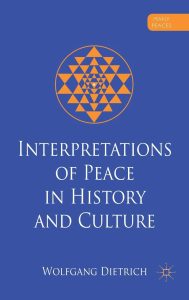
This book is more philosophical. I found it to be fascinating. The author provides a very in-depth analysis of the concept of peace across language, history, and culture. The book is so well researched; at times, I had no idea how he discovered some of the books he cites to provide analysis of interpretations of peace in so many different languages, along with historical examples of how different societies and cultures have conceptualized and pursued peace throughout history. With so many great examples, the author has categorized different interpretations of peace and provides thought-provoking analysis of how this informs how peoples around the world pursue the creation of peace in the societies where they live. It provides a lot to think about when working in diverse peacebuilding contexts, with people from diverse backgrounds.
15. Why We Fight: The Roots of War and the Paths to Peace (2022) | by Christopher Blattman
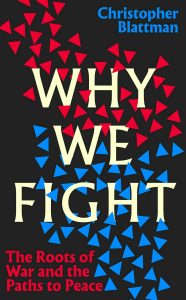
This book explores the reasons why conflicts rarely escalate into violence or war and how to disrupt this process in cases where violence or war seems inevitable. The book challenges the common perception of war as a series of random errors and emotions gone wrong. The author explains that most parties to conflict prefer to avoid violence because war is too costly, leading them to seek compromises instead. The author identifies five key factors that can push conflicts towards violence and discusses how to influence these dynamics through practical interventions. The book uses various examples, from warring states to street gangs and political factions, highlighting common patterns and lessons to be learned. The key message is that peacebuilders can disrupt the potential for violence and war, and the author provides techniques to do just that.
16. How Change Happens (2016) | by Duncan Green
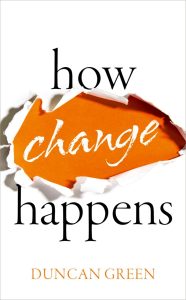
This one comes from outside the field of peacebuilding and offers great perspectives on how social change is made. Peacebuilding is in the business of social change, so this book can help us think about how to make changes in different ways. The book uses numerous real-world examples, analyzing the drivers and mechanisms of successful social and political transformations. The author offers a comprehensive framework for understanding change processes, exploring the role of power, politics, and social movements in shaping transformative change.
17. The Nobel Peace Prize: What Nobel Really Wanted (2010) | by Fredrik S. Heffermehl
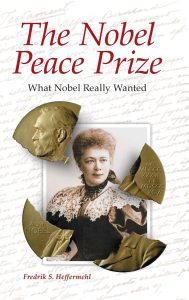
I feel like this is a microcosm of what has happened with global peacebuilding efforts over the past decades, and is useful to get us thinking about the broader picture of building global peace beyond whatever peace efforts we may be involved in at the moment. In this book, author and Norwegian lawyer Frederik S. Feffermehl reviews the history and inner workings of the Nobel Prize Committee, mapping how they have diverged from Alfred Nobel’s stated purpose of the award: to support disarmament to prevent war. He reviews how the committee has been influenced by political pressures and personal interests to present the award to many undeserving recipients over the years, including heads of militarized states, warmongers, and terrorists. The author evaluates each of the 119 Nobel Peace Prizes awarded between 1901 and 2009, tracking the ever-widening divergence of the committee’s selections from Nobel’s intentions. It gives us a lot to think about as peacebuilders.
Tools, techniques and reference materials
18. Across the Lines of Conflict: Facilitating Cooperation to Build Peace (2015) | edited by Michael Lund and Steve McDonald

This is a compilation of six comprehensive case studies written by different authors covering conflict-resolution techniques for peacebuilding. The case studies are drawn from real-life examples of peacebuilding initiatives in Burundi, Cyprus, Estonia, Guyana, Sri Lanka, and Tajikistan. Each case study was developed to offer practical guidance, tools, and techniques to effectively facilitate dialogue and negotiation processes in divided societies. The book offers insights into how to create spaces for constructive dialogue, empathy, and reconciliation among individuals and groups in conflict. The lessons and tools in this book can be applied in conflict resolution efforts at any level, from a formal mediator to a community-based peacebuilder.
19. Experiential Peacebuilding (2019) | by Ana Patel, Flavio Bollag and John Paul Lederach
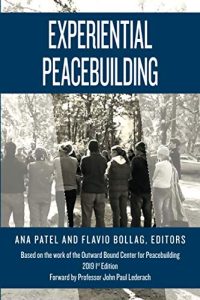
This is a great book applying the concept of experiential learning (i.e. learning from experience) to peacebuilding. It covers the use of participatory methods, interactive approaches, and facilitated learning experiences with groups in peacebuilding. The main author, Ana Patel, applies practical experiences and shares examples of ‘experiential peacebuilding’ from her involvement with the Outward Bound Center for Peacebuilding. This is a great resource for any peacebuilder working directly with groups of peacebuilders or who is bringing together diverse groups of people in any peacebuilding effort, from conflict mediation to promoting reconciliation in divided societies, to social cohesion initiatives, to peace processes. You will learn creative methods and practical tools for group peacebuilding work and learn processes to create experiential learning opportunities in various contexts and situations that will strengthen your peacebuilding efforts.
20. Locally Led Peacebuilding: Global Case Studies (2019) | by Stacey L. Connaughton and Jessica Berns

This is a collection of case studies on locally led peacebuilding from around the world. The premise is that peacebuilding efforts must be locally led, and each of the case studies covers a different approach from a different part of the world. It can be used by local organizations to find inspiration and ideas, and by international actors to learn how to engage with and support local peacebuilders. I also think that selected case studies would be great for any training program for peacebuilders.
21. The Oxford International Encyclopedia of Peace – Four-volume set (2010) | edited by Nigel Young
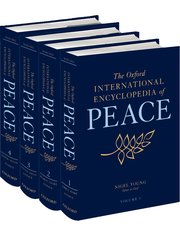
This is the most comprehensive encyclopedia of peace I’ve ever seen, covering a wide range of terms and concepts associated with peace and peacebuilding. It includes over 850 entries organized alphabetically, each term cross-referenced with a complete bibliography for further reading, and with a foreword by His Holiness the Dalai Lama. It includes tons of cool stuff like important dates in peace history, famous peace activists and scholars, anti-war movements, peace treaties, peace theories, and philosophical concepts, historic peace organizations, strategies, and approaches for peace, and much more. I feel like it is perfect for any peace scholar or university program on peace to be used as a reference. If I had a permanent home, it would be on my shelf.
I hope you found one or more books that can help you in your efforts to build peace. If you have read any of these books and want to share your thoughts, let us know what you think in the comments below.
Other book recommendations: I’ll be writing other posts recommending historic books on peace, autobiographies and biographies of peace heroes, and on key themes of building peace including peace education, social cohesion, gender/feminist peace, music and the arts for peace, environmental peacebuilding, media/tech and peace, conflict management, social justice and peace, peace activism, demilitarization and war abolition, peace infrastructure, building a culture of peace, and other related topics. Find more book recommendations on building peace on the resources page of our website HERE
If you have any book recommendations on peacebuilding or on any of the related themes above you can make a submission of a book you would like me to recommend by clicking HERE.
Also, click HERE to sign up for my newsletter to get regular tips, tools and FREE RESOURCES to help you find creative & effective ways to build peace.
* This post contains one or more affiliate links, which means that if you buy something though the link, I may earn a small commission. This is at no additional cost to you. It helps to support my blog which helps me serve you better. I only recommend learning materials and other products I believe can help you in your efforts to build peace. Cheers, Taylor J

